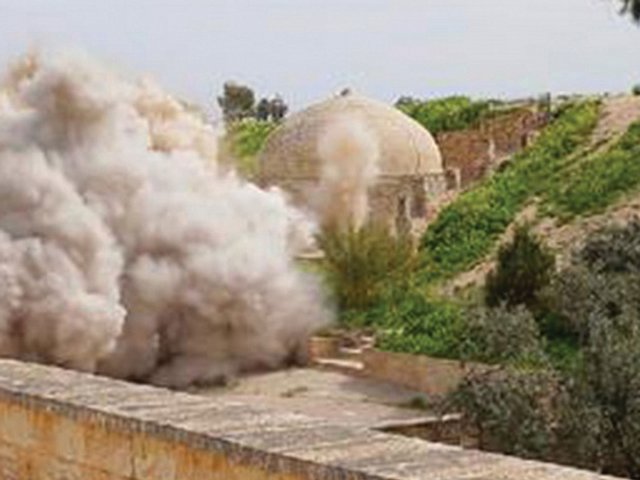Controversy has erupted over plans to install a 12 metre-high sculpture of a winged leopard by the Buddhist artist Dashi Namdakov in the city of Bolgar in Tatarstan. Leading clerics from the Russian republic’s Sunni Muslim majority have warned that the statue is offensive and could threaten its status as a successful multicultural state where Muslims and Christians live in peace.
The monument, called the Guardian, was commissioned by Tatarstan’s former president, Mintimer Shaimiev, who is credited with steering the republic away from separatism and the possibility of the conflict that has plagued war-torn Chechnya.
There has been a furious reaction to the sculpture, which is due to be unveiled this month. Muslims and conservationists say it clashes with a historic minaret in Bolgar and that it is offensive to Islamic believers. In an open letter to Tatarstan’s president, Rustam Minnikhanov, at the end of March, Tatar clerics and cultural figures said that “with its bared predatory fangs, arched wings, black colour scheme, and hooves, the Guardian corresponds more to the image of an aggressive animal that is ready to destroy; some kind of monster from pagan mythology”.
Namdakov is popular with the Russian elite. Vladimir Putin, recently elected as Russia’s president for a third term, and Russian tycoon Roman Abramovich are said to own his works. Shaimiev has called him “one of the greatest sculptors of our time” and said that when he saw the original sculpture of the leopard—Tatarstan’s national symbol—he realised “this is what must protect and preserve Bolgar”. The ancient city, 140km from the Tatarstan’s capital Kazan, is where Volga Bulgarians, with whom Tatars identify, accepted Islam in the tenth century.
Plans to turn Bolgar into a tourist destination begun under Shaimiev, who is also restoring the island of Sviyazhsk, which is famous for its Orthodox monastery. The protest letter to the president asked why the Guardian was not being installed there.
Namdakov says that Shaimiev asked him to make a larger version of the sculpture after seeing it at an exhibition in Kazan last summer. The artist says that Shaimiev had “warned that there might be unhappiness, among some people, among believers” with the sculpture. “But I didn’t expect it would be to such an extent. For me, it’s painful to hear this.”
He was speaking from central London, where he unveiled a five-metre-tall temporary statue of Genghis Khan last month.
The original version of the Guardian has been shown at the State Hermitage Museum in St Petersburg, the State Tretyakov Gallery in Moscow, Tibet House in New York and the Beijing World Art Museum.
Namdakov says that there might be a religious aspect to the criticism of the sculpture: “A lot has been written asking why the artist is not Tatar. Why is a Buddhist doing a sculpture for a religious site in Tatarstan?”


